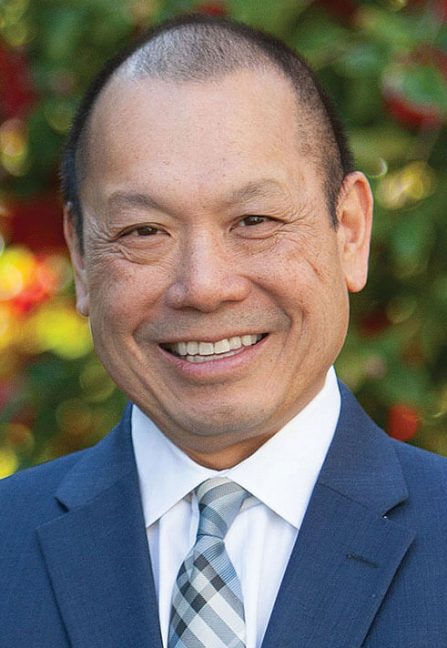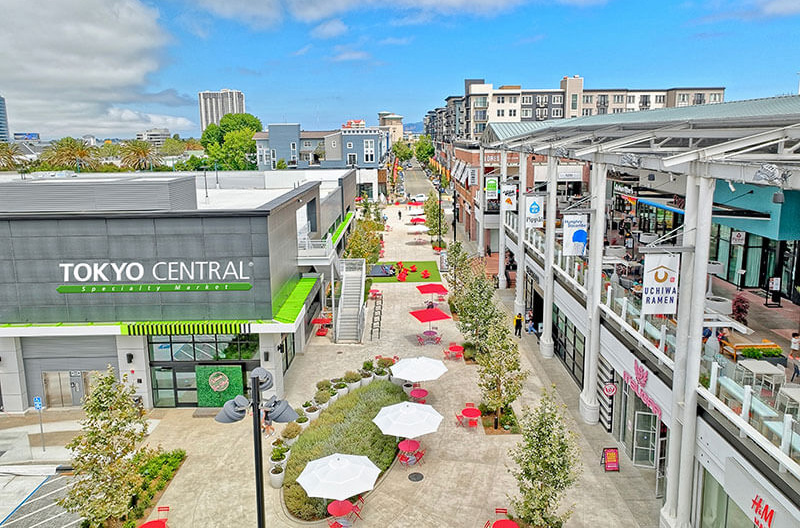With less than a month to go, officials at the California Grocers Association have been busy preparing for their annual CGA Strategic Conference. The focus of the Palm Springs event, which runs from Sept. 29-Oct. 1, is emerging technologies.
From informative educational sessions to retailer/supplier meetings, the three-day conference will give attendees the opportunity to learn how new strategies such as artificial intelligence, retail media and task automation, among others, can impact their bottom line.

Ron Fong, president and CEO of CGA, said the conference will be a terrific way to cap off what has already proven to be a productive year.
In early August, Fong shared some of the legislative issues CGA has been involved with this year and its impact for grocers in Northern California. (Editor’s note: The article has been updated to reflect the current status of legislation.)
Retail theft remains top of mind for all regions of California’s grocery industry. “CGA has taken advantage of recent political momentum around the issue to reach the best possible retail theft reform solution for our industry,” Fong said. “Over the last several months, legislative leaders have introduced several concepts to reform retail theft, but the picture is finally looking clearer heading into November.
“As we approach election season, there’s a package of bipartisan bills heading to the governor’s desk to tackle retail theft, along with a measure appearing before voters on the November ballot to reform parts of Prop 47. Each step of the way, CGA has been engaged to ensure the grocery industry’s voice is a driving force behind impactful policy changes.”
The governor signed the retail theft reform package in mid-August. Due to its relationships with legislative leaders, the association was successful in driving change to make stores, shoppers and employees safer from retail theft and related crimes.
Self-checkout has been under scrutiny this legislative session, with a bill introduced that would add what CGA said are “burdensome restrictions” to the process.
“Limiting self-checkout as this bill proposes would only undermine its convenience for our customers and lead to longer lines and higher prices at the grocery store,” Fong said. “Because 44 percent of shoppers prefer self-checkout, CGA has been aggressive in opposing this legislation to preserve the elements of self-checkout our customers value.”
The SB 1446 bill sought to regulate technology use in stores, impose labor ratios on self-checkout kiosks and restrict what products could be sold through self-checkout.
With the membership’s help, CGA mounted an aggressive counter-offensive online, in the media and at the Capitol. The association spoke to reporters, ran ads targeting elected officials in their districts and influencers in Sacramento and expanded its lobbying team to find new leverage points among legislative leaders. SB 1446 died after being redirected to the Assembly Rules Committee.
While defeating SB 1446 took up much of the association’s bandwidth, another bill was also important to the CGA. SB 1272 was a bill that sought to increase the amount of a gift card redeemable for cash from its current $10 limit. SB 1272 was gutted and amended to focus on an unrelated issue.
Another priority for CGA this year was to reform the Private Attorneys General Act.
“I’m happy to report that we achieved a big win for the industry this summer. Legislative leaders and business groups reached a deal to reform PAGA, which was signed into law by Governor [Gavin] Newsom,” Fong said. “The reform legislation reduces penalties for employers and improves the right-to-cure process for smaller employers, which will be a great relief to our independent operators and the grocery industry as a whole.”
PAGA reform was the first item checked off the list as Gov. Gavin Newsom, labor advocates and business leaders – including Fong – came to an agreement to pass new laws while removing a “Fix PAGA” initiative from the November ballot. Most notably, the compromise secured a right-to-cure provision for businesses that will reduce legal exposure and lawsuits.
[RELATED: Wild West Of Grocery: A Look At Dynamic Landscape Of Western U.S.]
Other issues impacting grocers
With more than one in five Californians struggling with food insecurity, CGA is sponsoring legislation by Sen. Susan Rubio to help eliminate food deserts in the state. The bill would provide grants to grocers looking to open stores in a food desert or areas at risk of becoming one.
“This could help a lot of grocers looking to invest in underserved neighborhoods in Northern California and totally transform food insecure communities,” Fong said.
“Over the past couple years, we’ve seen some of our regional grocers lose market share to retail giants and nontraditional grocery retailers in Northern California – a trend reflected throughout the state and country. This could be why we’re seeing grocers consolidate and merge to remain competitive.”
Although CGA had assumed the bill would be a tough sell in a challenging budgetary environment, SB 1419 was passed by both legislative houses and awaits a decision from Newsom.
Additionally, the association sponsored another piece of legislation. SB 1053 sought to eliminate reusable plastic-film bags from grocery store checkout lanes. Since the pandemic, CGA had tracked new momentum towards eliminating plastic bags from grocery stores due to shoppers seldom reusing the bags as intended and a sense they were not actually recyclable.
SB 1053 bills is headed to the governor for his signature.
Diversity driving change
The diversity of California’s grocery community is reflected in Northern California, which is home to a mix of national chains, specialty stores and local independents.
“Driving around Southern California, you’ll see Kroger and Albertsons stores. But you won’t see either up north. Here, Safeway’s Northern California Division has a significant presence. The Save Mart Companies, which were recently acquired by Canada-based Jim Pattison Group, have headquarters here in Modesto,” Fong said.
He noted there is a particularly strong market for Asian specialty stores such as 99 Ranch in the San Francisco Bay area.
CenterCal Properties recently announced that Tokyo Central, a Japan-based grocer and retailer, is coming in 2025 to the redeveloped Bay Street Emeryville shopping center in Emeryville.
Owned by Pan Pacific Retail Management, Tokyo Central offers a variety of imported Japanese goods, including groceries, made-to-order and ready-to-go food trays, health products and other specialty items. The store also will feature a restau- rant serving authentic Japanese cuisine. Other grocery stores in the PPRM portfolio include Gelson’s, Don Quijote and Marukai.
Fong noted that there is also a prominent market for Hispanic grocers in Northern California. These include Cardenas, Vallarta and Rancho San Miguel Markets.
In addition, there is a continued emphasis in the region on organic retail offerings via the likes of Nugget, Sprouts and Whole Foods thriving, along with several local co-ops such as Berkeley Bowl and the Sacramento Natural Foods Co-op.
“We have an impressive network of independents in this part of the state as well, including Mollie Stone’s in the Bay Area, Raley’s, Super King Market and New Leaf Community Markets to name a few,” Fong said.
Growth in NorCal
Several retailers have announced growth plans. Costco is expanding in Northern California, with half a dozen new store openings this year. Trader Joe’s has announced it will be opening eight new locations.
Elsewhere in the state, Northgate Gonzalez Markets just opened a new store in Lynnwood in what was previously a Los Angeles County food desert. Korean American grocer H Mart purchased the Oceanview Village Shopping Center in San Francisco, which will be the retailer’s fourth Bay Area location.
With inflation beginning to cool, Fong expects some relief for shoppers as grocery prices stabilize.
“With grocers’ profit margins returning to pre-pandemic levels, they are looking for creative ways to leverage new technology and tools to remain competitive and bring value to shoppers,” he said.
In terms of market drivers, sustainability and health and wellness remain important for many Californians.
“We are seeing emphasis on buying local products and shoppers taking a ‘food as medicine’ approach to their shopping trips,” Fong said. “This leaves room for [California] grocers to find creative ways to demonstrate their commitment in these areas.”

